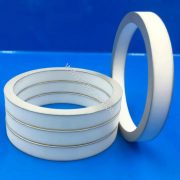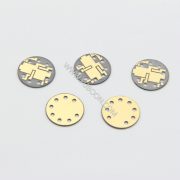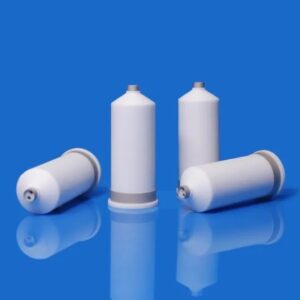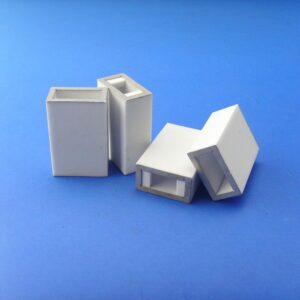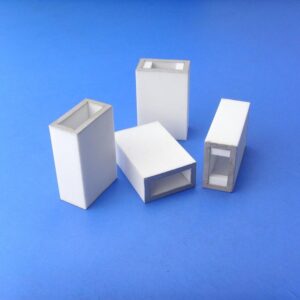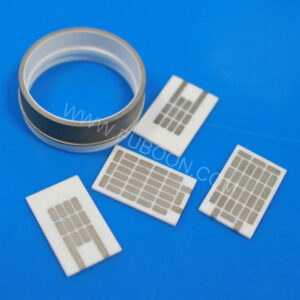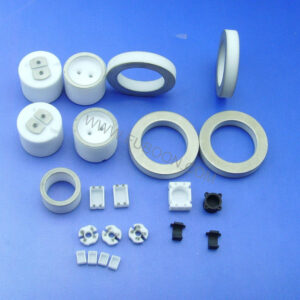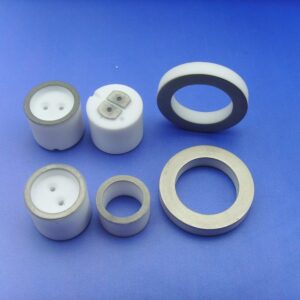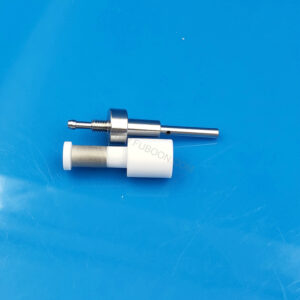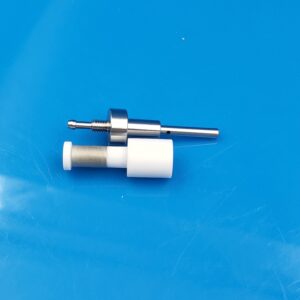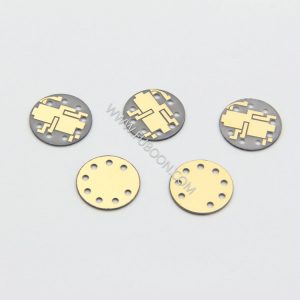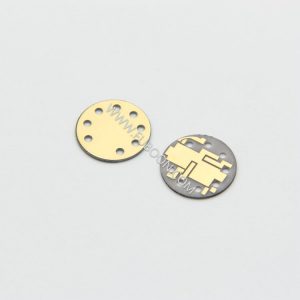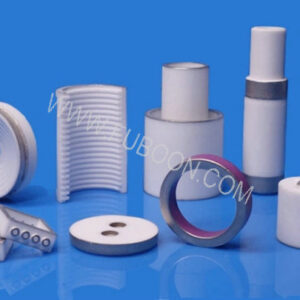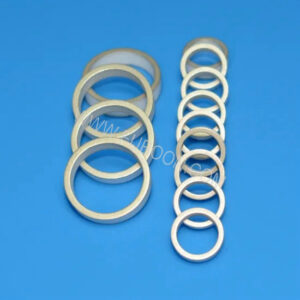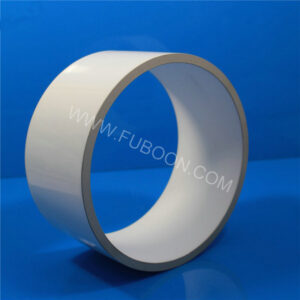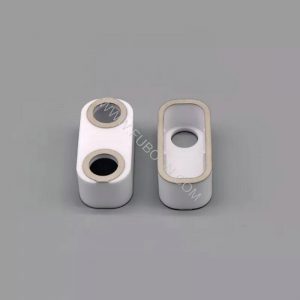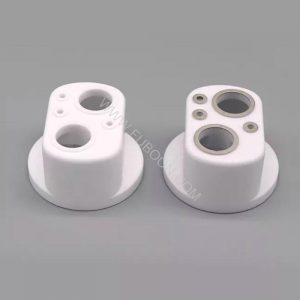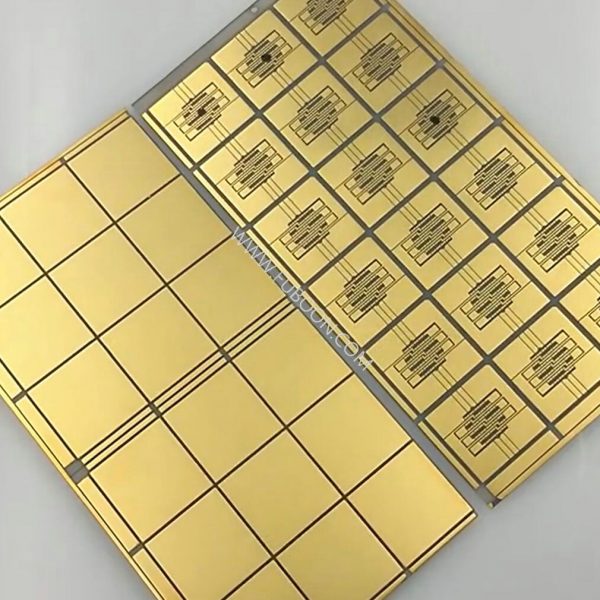
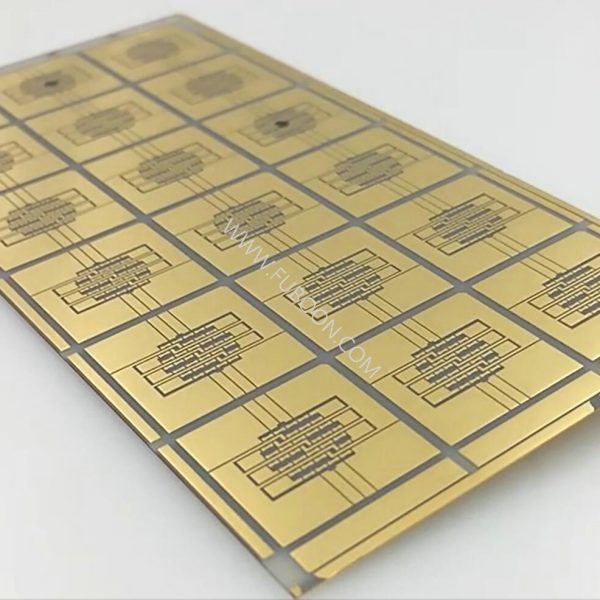
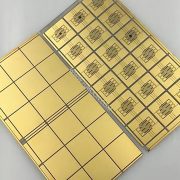
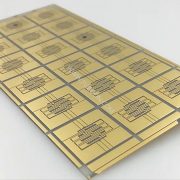
Substrato DPC metalizado cerâmico de nitreto de alumínio AlN com revestimento Au/Cu
- Descrição
- Investigação
Aluminum Nitride Ceramic Metallized DPC Substrate with Au/Cu Coating
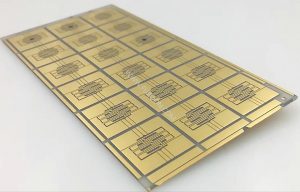
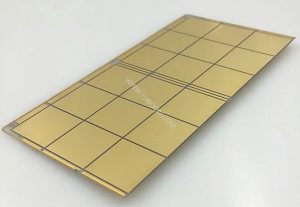
Aluminum Nitride Ceramic Metallized DPC Substrate
Mainly by evaporation, magnetron sputtering and other surface deposition process to carry on the substrate surface metallization, first under the condition of vacuum sputtering, titanium, and then is copper particles, the plating thickness, then finish making line with ordinary PCB craft, and then to plating/electroless deposition way to increase the thickness of the line, the preparation of DPC way contains vacuum coating, wet deposition,Exposure development, etching and other processes.
Aluminum Nitride Ceramic Metallized DPC Substrate
Aluminium Nitride Material Properties | ||||
Propriedades | FUB-AN180 | FUB-AN200 | FUB-AN220 | |
dissipadores de calor para sistemas de iluminação | Cinza | Cinza | Beige | |
Main Content | 96%ALN | 96%ALN | 97%ALN | |
Main Characteristics | Alta condutividade térmica,Excellent Plasma Resistance | |||
Main Applications | Heat Dissipating Parts,Plasma Resistance Parts | |||
Densidade aparente | 3.30 | 3.30 | 3.28 | |
Absorção de água | 0.00 | 0.00 | 0.00 | |
Dureza Vickers(Carregar 500g) | 10.00 | 9.50 | 9.00 | |
Resistência à Flexão | >=350 | >=325 | >=280 | |
Força compressiva | 2,500.00 | 2,500.00 | – | |
Young’ Modulus of Elasticity | 320.00 | 320.00 | 320.00 | |
Razão de Poisson | 0.24 | 0.24 | 0.24 | |
Tenacidade à Fratura | – | – | – | |
Coefficient Linear Thermal Expansion | 40-400 degree Celsius | 4.80 | 4.60 | 4.50 |
Condutividade térmica | 20 degree Celsius | 180.00 | 200.00 | 220.00 |
Calor específico | 0.74 | 0.74 | 0.76 | |
Thermal Shocking Resistance | – | – | – | |
Resistividade volumétrica | 20 degree Celsius | >=10-14 | >=10-14 | >=10-13 |
Rigidez dielétrica | >=15 | >=15 | >=15 | |
Constante dielétrica | 1MHz | 9.00 | 8.80 | 8.60 |
Tangente de Perda | *10-4 | 5.00 | 5.00 | 6.00 |
Observação: The value is just for review, different using conditions will have a little difference. | ||||
produtos relacionados
Isolador de cerâmica metalizada de alumina de alta tensão
Isolador Cerâmico Metalizado de Alumina de Alta Tensão para Tubo de Raios-X
Alumina Al2O3 peça cerâmica de metalização
Alumina Al2O3 peça cerâmica de metalização
Metalização de Alumina Mo-Mn
Metalização de Alumina Mo-Mn/Tubo Cerâmico Metalizado para Dispositivo de Elétron a Vácuo
Anel de cerâmica metalizado de alumina de alta resistência à temperatura
Anel de cerâmica metalizado de alumina de alta resistência à temperatura
g/H placa de ozônio cerâmica de alumina
g/H placa de ozônio cerâmica de alumina
Interruptor de vácuo de cerâmica metalizada
Cerâmica metalizada para ampolas a vácuo
Substrato/placa/disco metalizado DBC de nitreto de alumínio AlN com Au
Cerâmica Metalizada de Alumina para Aplicações Eletrônicas
Isolador de passagem de vácuo de tubo cerâmico metalizado
Tubo de cerâmica metalizado para isolador de passagem a vácuo
Isolador de Alumina Cerâmica Metalizada para Brasagem

